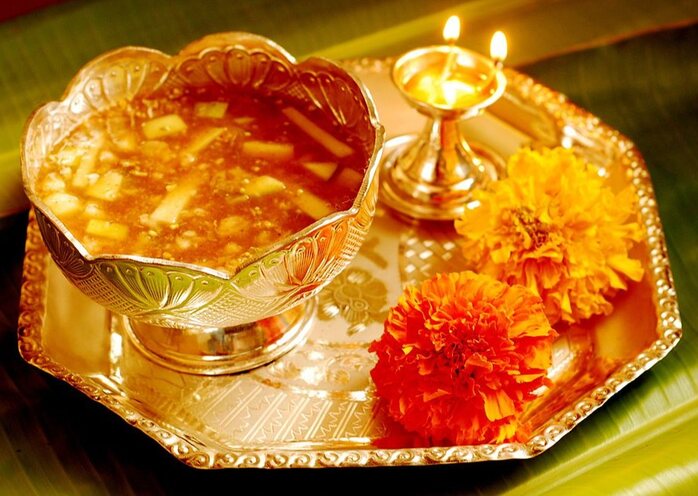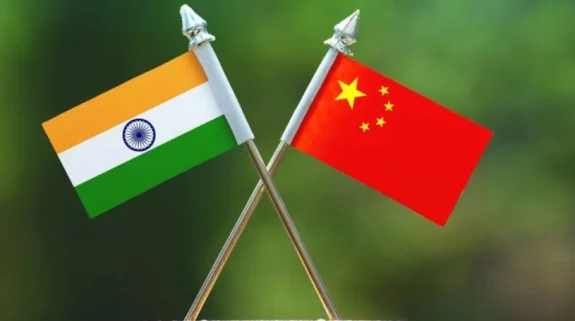The month of April is special in India as it heralds the New Year in almost all the regions of the country. Today the festivals of Ugadi, Cheti Chand, Navratri, Gudi Pawda, Sajibu Cheiraoba, Baisakhi, Navreh and Nav Samvatsar are being celebrated.
Stating that these festivals showcase India’s diversity and the spirit of ‘Ek Bharat, Shreshtha Bharat’, Prime Minister, Narendra Modi tweeted: “Over the next few days, people across India are going to be marking various festivals. These festivals showcase India’s diversity and the spirit of ‘Ek Bharat, Shreshtha Bharat.’ May these special occasions spread happiness, prosperity and brotherhood across the nation.”
Over the next few days, people across India are going to be marking various festivals. These festivals showcase India’s diversity and the spirit of ‘Ek Bharat, Shreshtha Bharat.’ May these special occasions spread happiness, prosperity and brotherhood across the nation.
— Narendra Modi (@narendramodi) April 13, 2021
Ugadi
Ugadi or Yugadi also known as Samvatsarādi, is celebrated as New Year in the States of Telangana, Andhra Pradesh and Karnataka in India.
The highlights of the festival are drawing of Muggulu, colourful patterns on the floor, decorating the doors with torana made of mango leaf, giving gifts to near and dear ones, having a special oil bath and eating pachadi. Combining all flavours like sweet, sour, salty, bitter, astringent and piquant, the pachadi signifies life in totality!
Cheti Chand
Cheti Chand or moon of Chaitra, marks the beginning of the lunar Hindu New Year for Sindhi Hindus. Marking the arrival of spring and harvest for the Sindhi community it signifies the birth of Uderolal in 1007, after they prayed to the Hindu god Varun Dev on Indus river banks to save them from the persecution of Muslim ruler Mirkhshah.

Jhulelal
Many Sindhis on this day take Baharana Sahib, a representation of Jhulelal, to a nearby river or lake. The Baharana Sahib consists of jyot (oil lamp), misiri (crystal sugar), fota (cardamom), fal (fruits), and akha. There is also a kalash (water jar) and a nariyal (coconut) in it, covered with cloth, phool (flowers) and patta (leaves).
Navratri
Known as Chaitra Navaratri this is the the second most celebrated, named after vasanta which means spring. Observed during the lunar month of Chaitra or post-winter, March–April, this festival in many parts comes after the spring harvest while in others during the harvest. Importantly, it also marks the first day of the Hindu calendar, and therefore also known as the Hindu Lunar New Year according to Vikram Samvat calendar.

Gudhi Padwa procession
Gudhi Padwa
A spring time festival marks the traditional New Year for Marathi and Konkani Hindus. Celebrated on the first day of the Chaitra month, it heralds the beginning of the New year according to the lunisolar Hindu calendar. Gudhi Padwa is observed with colourful floor decorations called rangoli, a special Gudhi flag (garlanded with flowers, mango and neem leaves, topped with upturned silver or copper vessel), street processions, dancing and festive foods.
Sajibu Cheiraoba
Sajibu Nongma Pānba, also called Meetei Cheiraoba or Sajibu Cheiraoba, is the lunar new year festival of followers of Sanamahism religion in Manipur. A lot of dishes are prepared for a grand feast which is traditionally made by the males with the females assisting them. After the dishes are ritually offered, they are exchanged with relatives and friends and then the feast begins.
Baisakhi
Baisakhi or Vaisakhi is observed by Hindus and Sikhs and marks the beginning of Hindu solar New year. Also known as Vaisakha Sankranti, it celebrates the solar new year, based on the Hindu Vikram Samvat calendar. Additionally for many Indians it is a spring harvest festival. Hindus perform charity especially of hand fans, water pitchers and seasonal fruits. Sikhs hold kirtans, visit local Gurdwaras, community fairs and nagar kirtan processions are held.
Navreh
Navreh or Kashmiri New Year celebrates the first day of the Kashmiri new year by Kashmiri Hindus. The Kashmiri Pandits dedicate Navreh festival to their Goddess Sharika and pay homage to her during the festival. On Navreh eve, a customary large plate (thali) is filled with rice and offerings like almanac, scroll, dried and fresh flowers, wye herb, new grass, curd, walnuts, pen, ink container, gold and silver coins, salt, cooked rice, wheat cakes and bread and covered. The next day family members gather together to uncover the thali and view it.




















